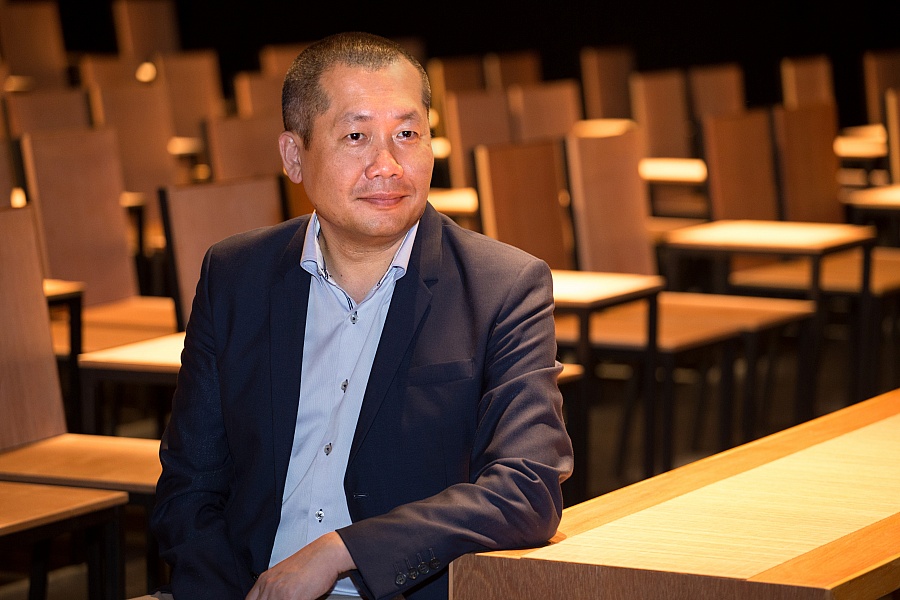Louis YU worked as Executive Director of the Hong Kong Arts Centre from 1994 to 2007. Two events in particular stand out in his thirteen year of work. On June 30th, 1996, Louis invited a group of artists to witness the handover ceremony from the Arts Centre. “We invited different artists to perform in the gallery. One of our friends even composed a song for the Handover. Although we could only witness it from the TV set, but the ceremony and Governor’s farewell was in the nearby convention and exhibition centre, and Queen’s Pier. We felt affected because the Arts Centre was quite close to both venues.”
The second event happened during the World Trade Organization’s Ministerial Conference in 2005. Because of the protest by South Korean farmers, the police installed a huge blockade around the Arts Centre. Louis remembers walking from Wong Nai Chung Road back to the Arts Centre. The empty and silent streets became a surreal footnote to his work in Wan Chai.
For a period of time, the Arts Centre had offices in Hopewell Centre and East Town Building. Louis shuttled back and forth the district, “Wan Chai is very pedestrian-friendly. The small shops are full of possibilities.” Louis also appreciates the historical layers of Wan Chai. The first layer is located in Queen’s Road East, Wan Chai’s true coastline, which consists of historic buildings, temples, and the old city. The subsequent stages of reclamation are marked respectively by the hundred years-old tram rail, the business district near Luk Kwok Hotel, and the latest Wan Chai North area. Each layer represents a different phase of life. Louis is also fond of the boundary stone on Wong Nai Chung Road, which defines the Victoria City and marks the historic significance of the district.
Despite its layers, the area near Arts Centre was rather dull back then. Louis helped develop the public space right outside Arts Centre. Various art events were run on temporary licenses to gauge the response of office workers and artists. Later on, the Arts Centre submitted an application to manage this public space. After three years of hard work and negotiation with the district council and various government departments, Louis’ plan came through. The Arts Centre began with installing sculptures and hosting art events, which increased the centre’s reach and exposure. In spite of its size, the public space brought art managers and users together, creating a win-win space with tolerance and imagination.
Looking back, the Arts Centre has given birth to an energetic street music event. While Louis feels a sense of remorse for the inevitable redevelopment of old Wan Chai, he also sees successful cases such as the Comix Home Base and Blue House as innovative ways of redeveloping a community. He hopes the manifold history and vibes of Wan Chai could be retained.



